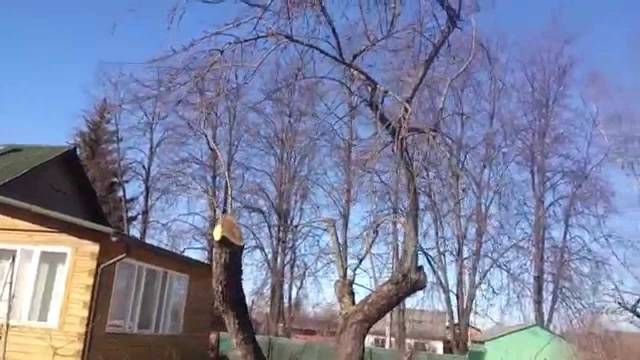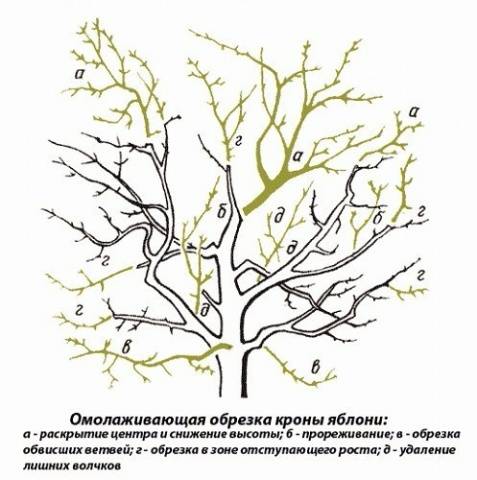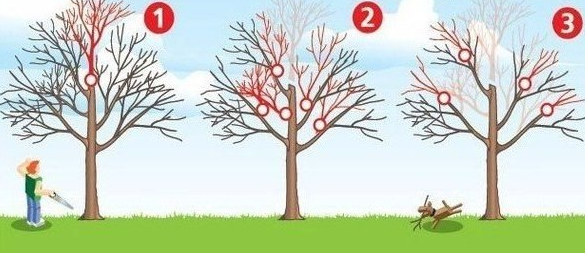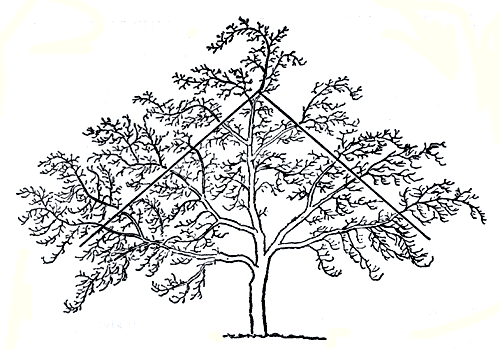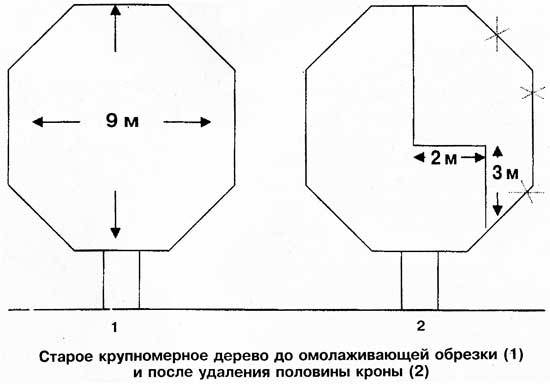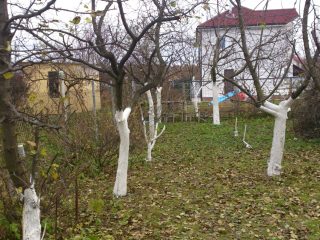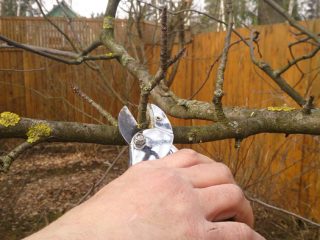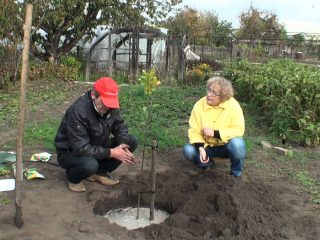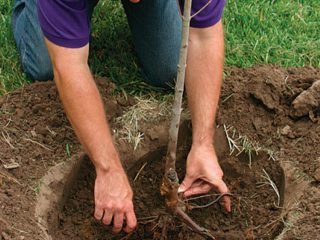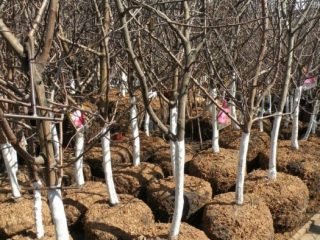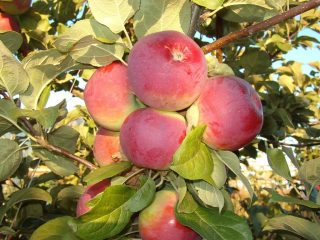Content
Probably, at least one apple tree grows on every personal plot. This fruit tree generously gives its harvest to its owner, demanding only a little attention in return. The minimum care for the plant is pruning. Young seedlings are pruned to form a crown, but old trees are rejuvenated in this way. In order to correctly carry out the procedure for rejuvenating old apple trees, you need to know the principles and optimal timing for its implementation.
Why prune old apple trees?
Uncontrolled growth of an apple tree can lead to the plant shading the entire garden plot and at the same time stop producing crops. Old apple trees without rejuvenation may even die. Wherein pruning allows you to replace old branches with young, fruit-bearing shoots and form a beautiful compact crown of the plant. Rejuvenating old apple trees allows you to increase productivity through proper redistribution of nutrients. On properly formed trees, each branch receives the required amount of sunlight, which contributes to uniform, full ripening of fruits.The absence of excess greenery ensures normal air circulation, preventing the spread of diseases and insect pests.
Thus, pruning old apple trees allows you to get a beautiful, neat tree on your site and a tasty, “healthy” harvest of ripe fruit.
When is the best time to prune a fruit tree?
There is ongoing debate among gardeners about when is the best time to prune apple trees: in the spring or autumn? Every gardener has his own opinion on this matter.
Professionals recommend:
- Prune young seedlings in the spring, before the active stage of sap flow begins. This will prevent the still fragile tree from freezing in the winter.
- Old apple trees should be pruned in the fall. As temperatures drop, they go dormant and pruning causes minimal damage to them. By spring, all wounds will heal, and the apple tree will begin its new life cycle without any delay in growth. Winter frosts are not scary for the plant in this case.
- In summer, you can trim only a few branches to thin out the crown of the apple tree.
- In the southern regions, young seedlings and mature apple trees can be pruned in winter, but this procedure must be carried out very carefully so as not to damage the fragile frozen crown.
Analyzing the above recommendations, we can say that pruning old apple trees in the fall is optimal. It allows you to rejuvenate the tree without causing it suffering. Already with the onset of spring, such a plant will delight you with fresh herbs and promptly produce tasty, large fruits in large quantities.
Trim You need to plant an apple tree in the fall at a time when the leaves have already fallen and the movement of juice in the body of the plant has stopped, but in this case you should not wait for frost.Unfortunately, it is not possible to name the exact date for the event due to the climatic characteristics of each region. So, each owner should independently monitor the weather forecast and prune the fruit tree approximately 3-4 weeks before the onset of stable frosts.
Basic rules for pruning
Throughout the entire growing period, starting from the moment the seedling is planted, the gardener must prune the apple tree annually, observing the basic rules and principles. They depend largely on the age of the fruit tree: during the first 5 years it is necessary to form the crown, then care consists of removing improperly growing and diseased branches. An apple tree that has reached 20 years of age is considered old and needs to be rejuvenated. Unlike sanitary pruning and thinning, the procedure for rejuvenating an apple tree in the fall should be carried out according to the following rules:
- It is necessary to rejuvenate only healthy apple trees, which after the procedure will be able to fully develop and bear fruit. Trees with many dry, diseased, broken branches should be replaced entirely with young seedlings. There is no point in trimming them.
- When rejuvenating, large branches need to be removed, so to minimize damage, the activity should be carried out while the plant is dormant.
- During the rejuvenation process, care should be taken to remove branches that most impede the penetration of sunlight deep into the crown.
- Before you start rejuvenating, you need to prepare your saw and pruning shears. The instrument must be sharp and disinfected.
- It is recommended to begin rejuvenation by removing the largest branches. Using the principle: it is better to remove one large branch than many small ones.
- All branches must be removed from the trunk itself, leaving no stumps. This will prevent the development of diseases on the cut.
- All broken, dry and improperly growing branches must be removed.
It is not possible to rejuvenate a tree quickly, so you should be patient. To fully implement the procedure, it will take 2-3 years, depending on the neglect of the apple tree. Pruning of old and diseased, as well as “extra” branches in accordance with the rules proposed above, should be carried out in the first and second years of rejuvenation. Trimming too many branches in one year can lead to the death of the plant.
The final stage of formation should be carried out in a gentle manner, following the rules:
- Massive skeletal branches need to be trimmed, leaving a section 3.5 m long.
- You need to remove old shoots that interfere with the development of young branches.
- Old branches under actively developing young shoots should be removed.
It is quite simple to form mature trees, which at the initial stage of cultivation had a clear crown contour and were regularly thinned. In this case, rejuvenation can be carried out in 1-2 years without much effort or damage to the plant. It is much more difficult to correctly form a neglected old tree, which has been growing its green mass uncontrollably for many years. In this case, you must follow the following rules:
- You need to shorten an old apple tree by 1/3 of its entire height.
- The thickest areas of the crown need to be thinned out.
- Branches that have already stopped growing and have not developed for several years need to be removed.
- In one year, no more than 2-3 large branches 10-15 cm thick should be removed.
- Small fruiting branches need to be pruned into several buds in order to stimulate growth and make them stronger.
- Cuts on branches up to 2 cm in diameter heal painlessly and quickly.
- The lower branches of the apple tree should not obscure the upper shoots.
- It is easier to form old apple trees according to the chosen scheme during several years.
Having familiarized yourself with the principles and rules, it becomes clear how to rejuvenate an old apple tree. Based only on the proposed theses, you can develop your own strategy and form the crown of the apple tree correctly, giving it a decorative appearance and restoring vitality. The pruning schemes proposed below will help to clearly assess the scale and technology of the work.
Schemes for the formation of old apple trees
Old apple trees can be formed arbitrarily, focusing on the basic principles and rules, or adhering to a certain pattern. The pruning scheme can be any; you can find a lot of options in various sources. We will try to describe two schemes for pruning old apple trees in the fall. One option will be of interest to busy and novice gardeners, while the second option on how to rejuvenate an apple tree is intended more for professionals.
A simple option for rejuvenating old apple trees
A simple scheme for the formation of apple trees is based on the basic rules of rejuvenation. Its principle is as follows:
- Be sure to remove diseased, broken and dry branches.
- Shorten all healthy branches by 2 m.
- When rejuvenating, open each branch to the sun's rays as much as possible.
This diagram is clearly demonstrated in the picture:
Pruning an old apple tree according to this scheme should begin with the removal of dry, diseased and broken branches. You also need to slightly thin out the crown located close to the trunk. It is recommended to perform these actions in the first year of formation. Next fall it will be necessary to shorten each branch of the apple tree by 1.5-2 meters. In the third year of formation, it is recommended to remove a third of all young shoots. It is necessary to thin out branches and carry out sanitary pruning every year. The method duplicates the biological laws of plant development and is one of the most gentle. This is what novice gardeners often use in their practice.
A modern way of rejuvenation
For professionals and experienced gardeners, it is recommended to use one coordinate method rejuvenation of an old apple tree. It is performed in 2 stages, and the time interval between stages can be several years. To make it clear how to properly prune an old apple tree in the fall in accordance with this modern technology, we will try to provide a detailed description and visual pictures:
- In the fall, make deep pruning on an old apple tree, removing most of the crown from the south side. It is recommended to leave a green “cap” 3 m high and 2 m wide.
- When carrying out deep pruning, you should try to make as few cuts as possible.
- All cuts must be treated with garden varnish. Sections on thick branches should be additionally wrapped in black polyethylene to speed up wound healing.
- After the southern formed side gives the first flowering and fruits, you can resort to pruning the remaining part of the crown. This second stage of rejuvenation can occur after 3-4 years. It should be carried out in the fall, following the same rules that were used when pruning the southern side of the tree.
You can rejuvenate not only the above-ground part of the apple tree, but also its roots. Root rejuvenation should be done in the spring. To do this, you need to dig a trench 4 m wide from the plant trunk and 60-70 cm deep. You need to cut the roots a little over the entire area of the trench. Sprinkle nutritious soil with the addition of phosphorus and potassium fertilizers over the remaining root system.
The two proposed methods of rejuvenation require a lot of time and, unfortunately, one cannot expect quick results from such actions. This is probably why some gardeners advise radical pruning of the apple tree in one year, immediately reducing the crown of the tree by 3-5 times. Of course, such a decision may be justified in some cases, but for a fruit tree such deep pruning will be stressful and there is a high probability that the apple tree will not survive such changes at all.
You can find out some erroneous points in rejuvenating old apple trees from the video:
Conclusion
For novice gardeners, it is quite difficult to immediately understand and assimilate all the above information, so we suggest watching a video clip in which a specialist will show, using an example, how to prune an old apple tree and give some practical tips on carrying out the rejuvenation procedure:
The result of rejuvenation of a pruned apple tree can be seen in the video:
A visual demonstration makes it possible to appreciate the need for this procedure: a mass of fresh, green shoots and a lush crown give the old tree new life, and after a few years the renewed plant will thank the competent owner with a tasty harvest for the care and efforts shown.

